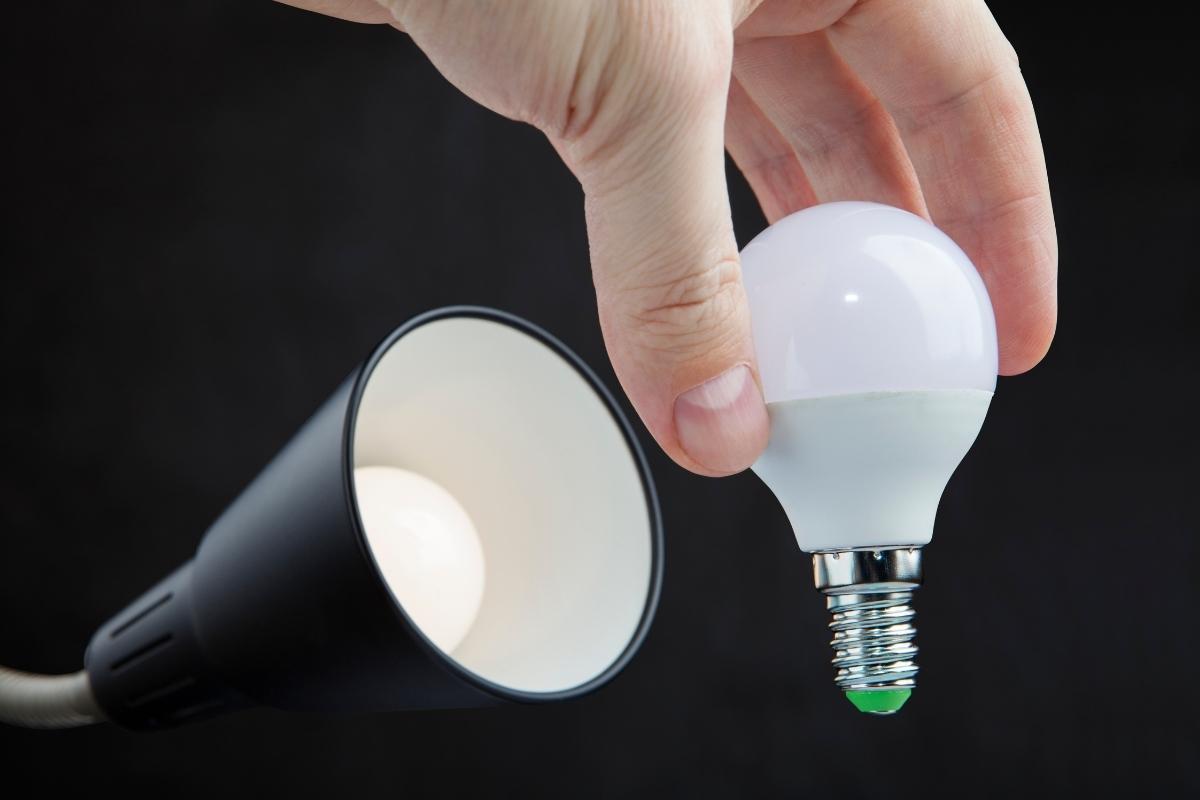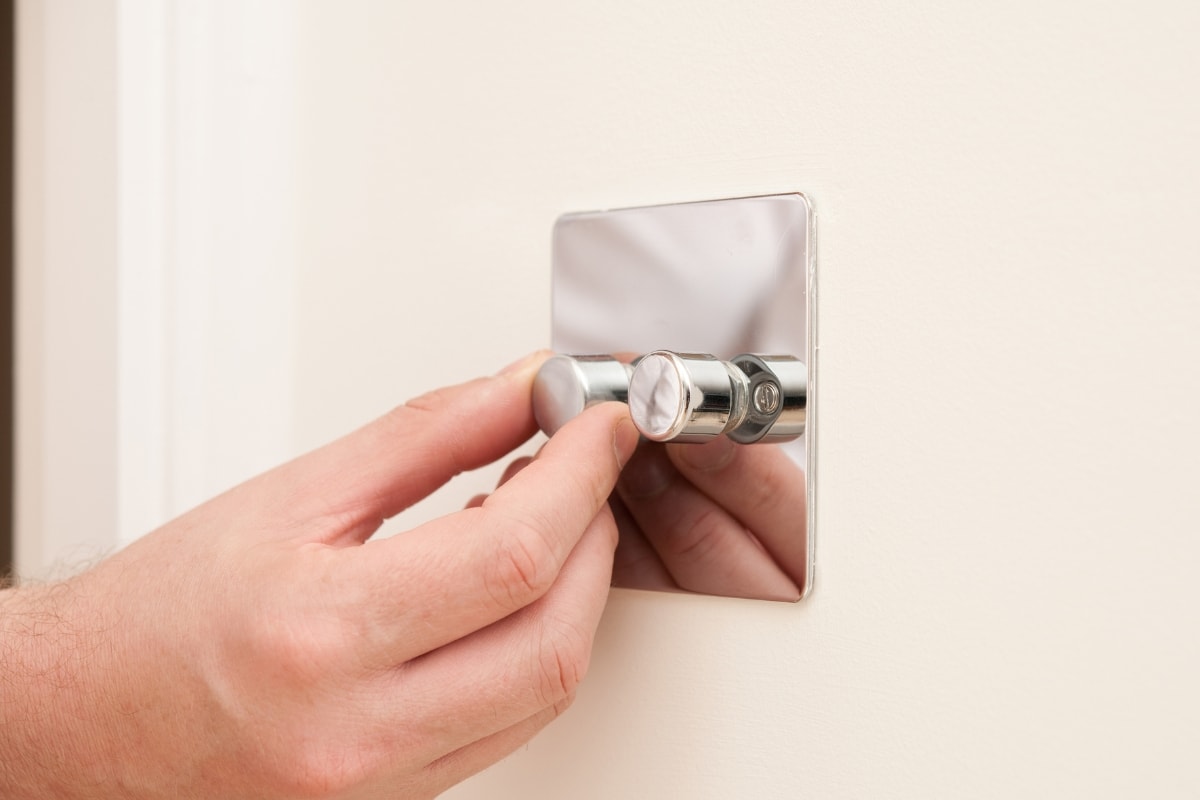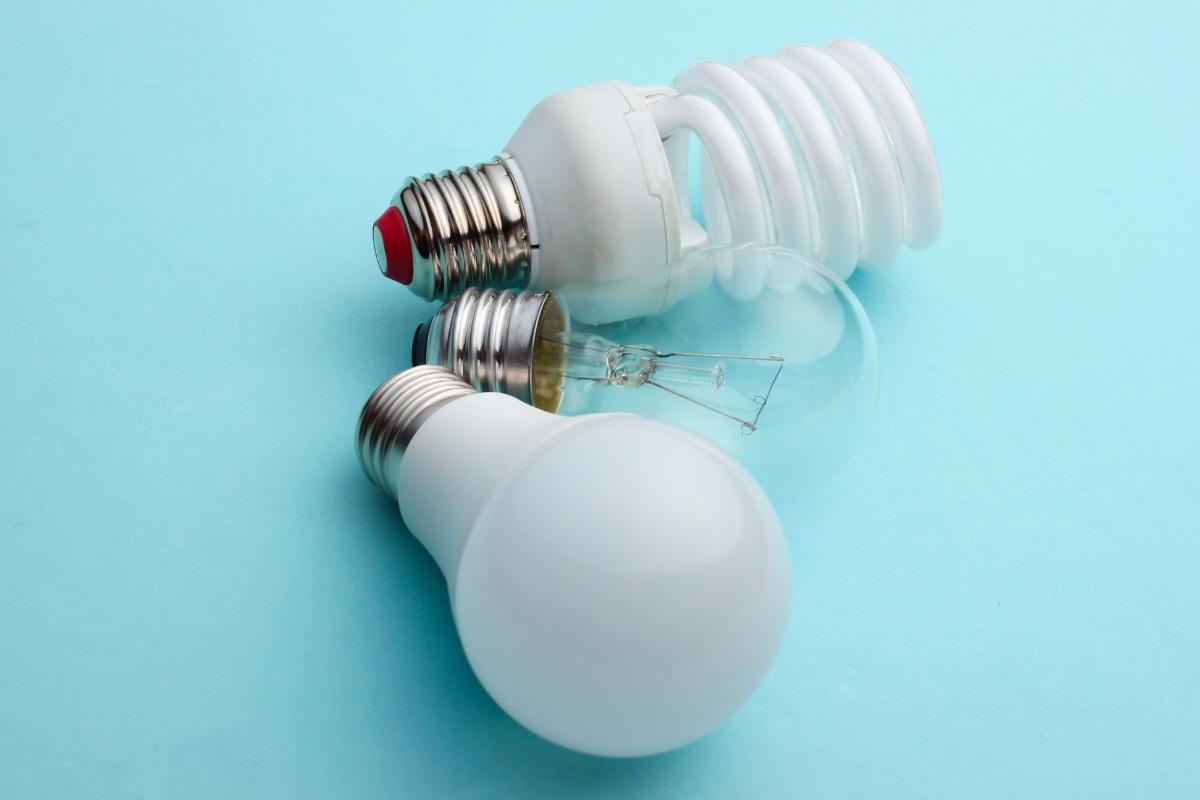Flickering LED lights could be very annoying. However, it is also pretty common that almost everyone has witnessed a flickering light at least once or twice sometime. Dimmable LED flash usually happens when switching from traditional incandescent or halogen bulbs to modern, energy-efficient LED bulbs and connecting with a dimmer switch.
When you try to dim the LED lights, it can be frustrating to find that the newly installed LEDs are flickering. It does not work out as you expected, or even worse, as the traditional bulbs were just functioning perfectly and never bringing you any flickering problem. LED flickering can also happen due to other technical causes without a dimmer. Your dimmable LEDs may suddenly start to flash even when they are completely turned off.
In this article, we will help you troubleshoot all possible causes of why LED bulbs are flickering and how to fix them.
Why Flickering Is Bad for Your Health

Flickering can be both a visible flicker that is observable by human eyes or an invisible flicker that is present but is too rapid and cannot be perceived by naked eyes. Both flickerings can be harmful and cause health issues such as epileptic seizures, dizziness, headaches, fatigue, eyestrain, vision impairment, migraines, and a lack of concentration. Let alone visible flicker can be visibility disturbing.
What Causes LED to Flicker
Compared with traditional incandescent/halogen bulbs that use a filament to first convert electricity into heat and then light, LED bulbs use an electronic driver that converts electricity directly into light to illuminate. This is why LEDs are most likely to flicker because they are directly impacted and are very sensitive to voltage fluctuations. Another reason incandescent bulbs tend not to flicker is that they get heated to glow. It’s a gradual process, so it takes time to heat up and cool down.
LEDs are very reliable and have good quality. Modern LED bulbs have improved a lot to manage voltage fluctuations better so that they flicker less, but voltage fluctuation is still the main reason why a LED flickers.
Thus, when a LED light is flickering or flashing, almost all possible causes are related to voltage fluctuations. Among all posisble causes, the usage of a dimmer switch is a common and major one. So, below we’ll mainly discuss flickering LED problems in two sections – with or without a dimmer switch.
Flickering LED Without a Dimmer
When the existing light is working fine without flickering, but right after switching to a LED bulb or replacing a faulty LED bulb with a new one, your LED light may start to flicker and flash. As discussed above, LEDs are sensitive to voltage fluctuations and almost all LED flickering is somehow related to voltage fluctuations.
Here are all possible causes for LED flickering without using a dimmer:
Loose Wiring
A loose connection in the circuit is one of the most common culprits that cause your LED to flicker. The loose connection can consist of loose wiring, outdated wiring, damaged wiring, corroded wires, or wiring with incorrect installation. And it can happen anywhere in your house – behind your wall switch, light fixture, circuit breaker, worn connectors, or wires hidden in your walls.
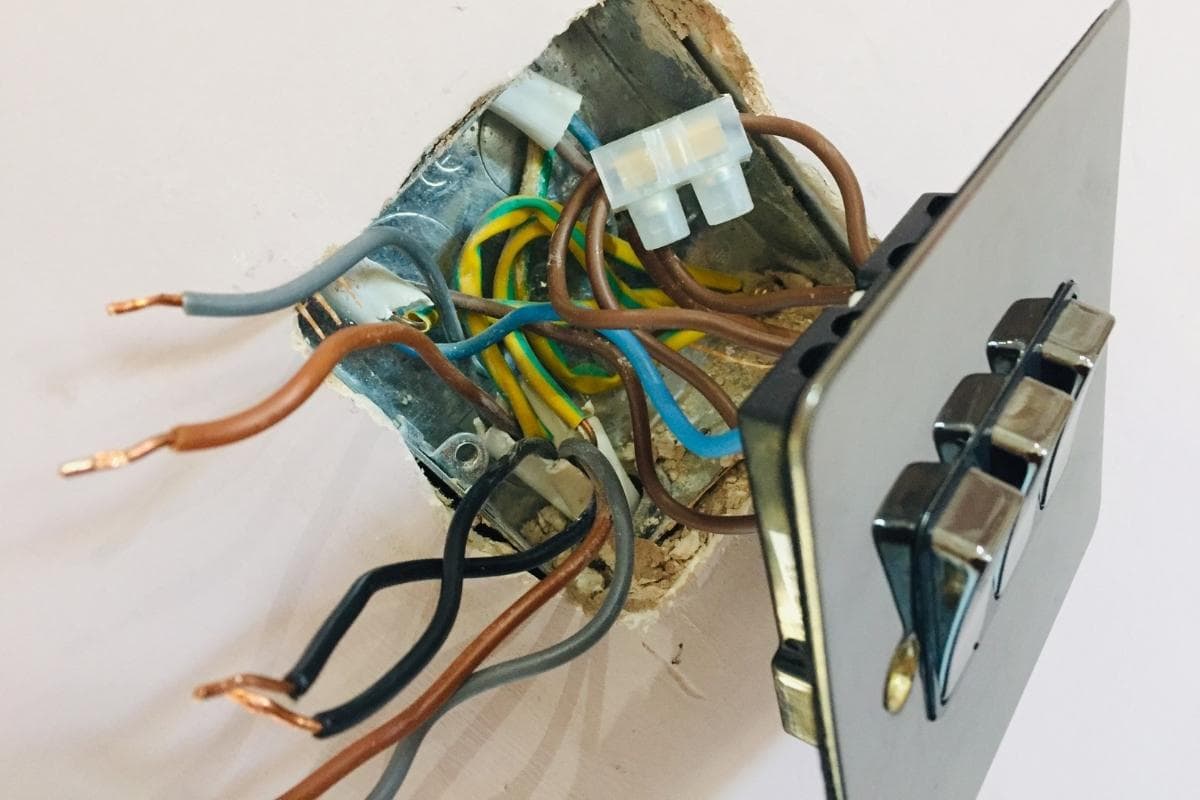
Always check for the simple and most obvious causes first. It can be an easy fix by simply tightening your bulb firmly into the socket. If it does not fix and hard to locate the wiring issue, call for a licensed electrician to look at the wiring in your house.
LED Flickering With Transformer
When using low-voltage LED lights with a transformer, it’s possible that the flickering of your LED is caused by an incompatible transformer. The existing transformer may be an incandescent or halogen electronic transformer but not specially designed for LEDs. Besides, the existing transformer may have a high minimum load required, which is fine for properly loading a halogen bulb but cannot be reached by low-watt LED bulbs.
Either way, if you use low voltage lights with a transformer and the LED flickers, make sure the transformer is compatible with LEB bulbs to prevent flickering from happening.
Inrush Current From Large Appliances
When you switch on some large, high-wattage appliance, such as an air conditioner, washing machine, or corded vacuum, the inrush switch-on surge current may cause the LED to flicker in the same circuit. It’s usually not a big issue to worry for a LED bulb to flicker temporarily and occasionally when you switch on a large appliance.
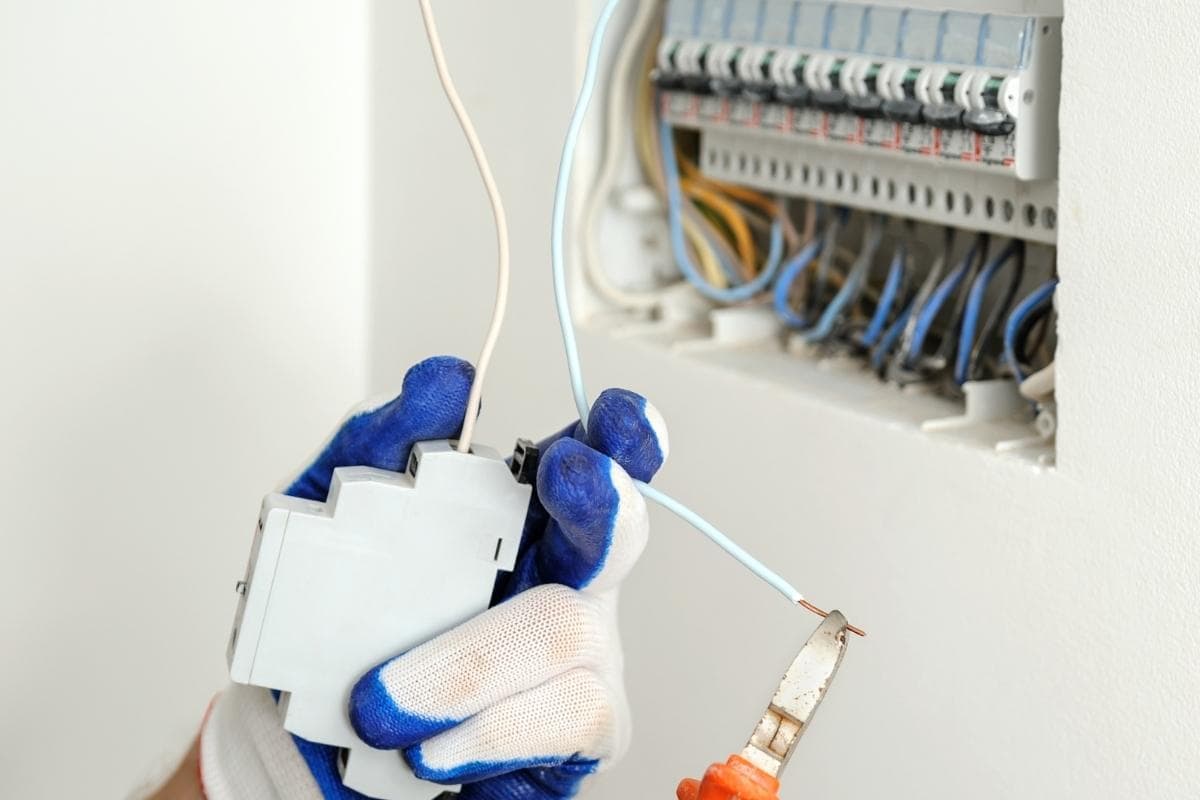
You can locate the high-wattage appliance by turning them on one by one to see which appliance will trigger the flickering. Switch the high-wattage large device to a smaller one, or call a licensed electrician to fix the issue on the breaker or enhance the wires.
Circuit Overload
If the LED light continues to flicker after the large appliance has already been turned on for some time, you might have a circuit overload, meaning you are running too many loads simultaneously on the circuit. Or one of the large appliances is malfunctioning which results in a flickering LED light in the circuit. Remove some appliances and see if it can fix the flickering or consult a professional electrician to address the circuit overload issue.
Voltage Fluctuation
Voltage fluctuations can cause LED flickering and it can make the flickering problem worse over time. Loose or corroded connections in the house, powerlines, overloaded circuits, or small conductor wires can all cause voltage fluctuations.
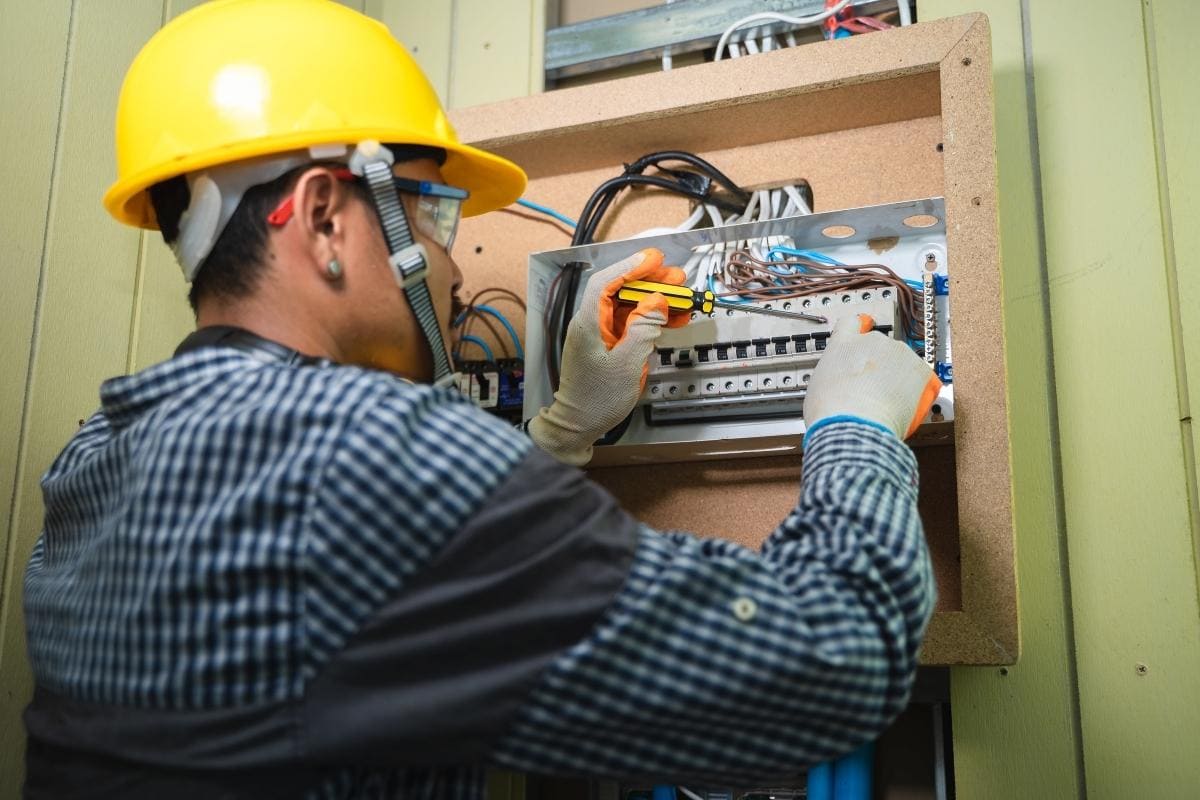
If you notice LEDs are flickering in your entire house, the voltage fluctuations may come from outside your house. The voltage fluctuating problem may lie in your main electrical service panel, main service cable, meter connection, or breaker box. It might also come from the local utility service or power grid if they are servicing the electricity or under bad weather.
If the flickering persists and gets worse, you can assume you are experiencing a voltage fluctuating problem. If you are confident in electricity, you can monitor the voltage fluctuation to diagnose the issue or better get help from a licensed electrician.
Residual Electricity
When you’re wondering, why do LEDs flicker even when the lights are turned off? It’s usually due to residual electricity. Even when the switch is turned off, there is still residual electricity in the circuit, and the residual current goes to the bulb. Though it’s not enough to cause the LED bulb to glow continuously, the small leakage current is enough to cause the LED to flicker and flash, as LEDs only need and consume very little power.
Normally, residual electricity should go to the ground instead of going to the light. So what can cause residual electricity to the LED bulb? There are several possible reasons:
Electromagnetic Induction
If the wires behind the switch are packed pretty close, there is a possibility that the current can be induced to other wires due to electromagnetic induction. The induced current may cause LED to flash.
Incorrect Wiring
Incorrect or faulty wiring behind the switch can cause residual current in the circuit that flows to the LED to cause it to flicker.
Leakage Current From the Switch
Most solid-state switches(TRIAC) require a minimum load or holding current for the triac to remain on, so the small amount of leakage current goes to the LED bulb and causes it to flicker.
The leakage current may also come from the capacitors of these switches, or if the switch does not have the ground wire set up properly, the residual current may remain in the circuit and flow to the LED bulb.
Using a Smart Switch
Among all the above possible causes, the most common thing that causes residual electricity is that you are using a switch with additional smart features, such as a dimmer, motion sensor switch, a WiFi controlled switch, or a switch with an indicator light or night light. These smart switches will always need their own standby power supply even when the switch is at off position.
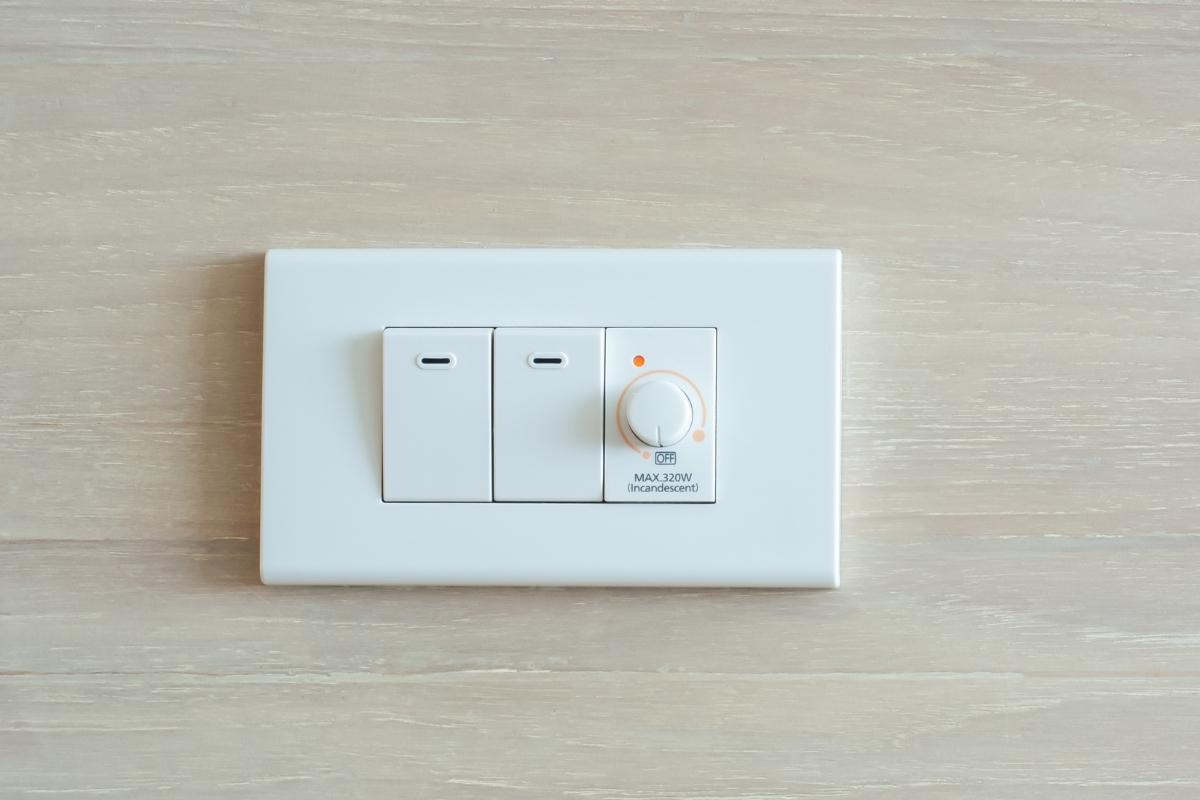
Because most of the old houses do not have a neutral wire available in the wall switch box, most of these smart switches utilize the ground wire for completing the circuit instead of the neutral wire. So, these smart switches are always consuming power even when it’s turned off. The tiny standby power is enough for the current leakage to trigger a flickering LED.
How to fix LED flickering caused by residual electricity?
Use a Smart Switch With a Neutral Wire
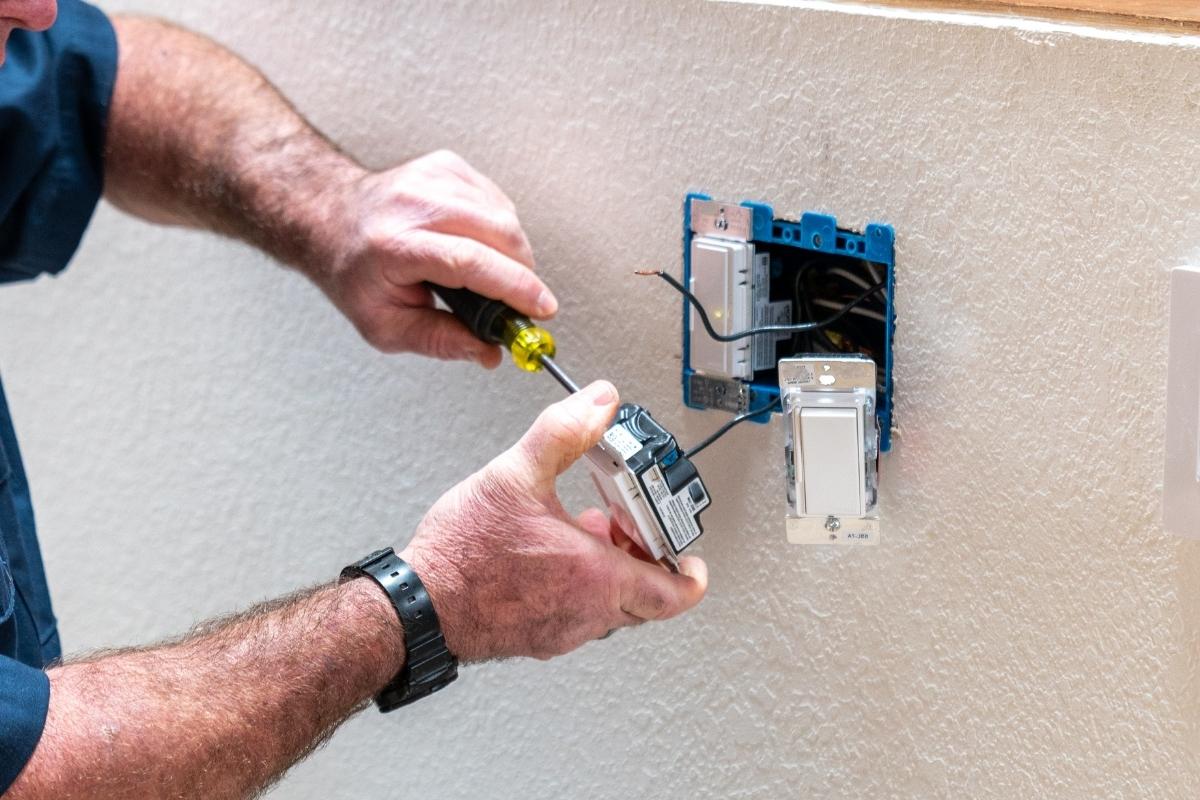
If you have a neutral wire available in your wall switch, you can use a neutral wire required smart switch. In this case, the ground wire is only used for earthing, so the leakage/residual current will go to the ground, not to your bulb. If you don’t have a neutral wire and have to use a ground wire smart switch, upgrade your smart switch to a better quality one that is specially designed for LEDs.
Add a Bypass Capacitor
One quick, universal solution is to add a bypass capacitor to the load(your LED bulbs, etc.), so the residual current will go to the bypass capacitor, not reach the bulb. One example of the bypass capacitor is the Lutron LUT-MLC.
Insert a Small Halogen or Night Light
Similar to the bypass capacitor method, you can add a small watt incandescent, halogen, or small night light in parallel with the LED bulbs to quickly solve the problem. An un-lit, cool, incandescent bulb has little to no resistance, which provides a path for the leakage current to bypass LEDs. Also, the added incandescent can act as an added minimal load which helps LED to be more stable.
Faulty Lamp
A bad, faulty, or near end-of-life LED lamp may be malfunctioning which causes the LED to flash. The inner components, such as the driver, capacitor, and other electronics, might become faulty. If the LED lights flicker after you have switched them on for some time, it’s possible the LED lamp is faulty. It’s time to replace it with a new lamp.
Faulty LED Bulb
Most of the time, LED bulbs are extremely reliable and consistent. It’s the least possible cause that it’s a bad bulb. But don’t neglect the cause simply because it’s rare. Try with another working bulb to see if it can resolve the issue.
Flickering LED With a Dimmer
The majority of LED flickering issues are dimmable LED flashes or flickers when used in conjunction with a dimmer switch. The dimmable LED flickering can have universal causes, as discussed above, but some causes are specifically related to the usage of a dimmer switch.
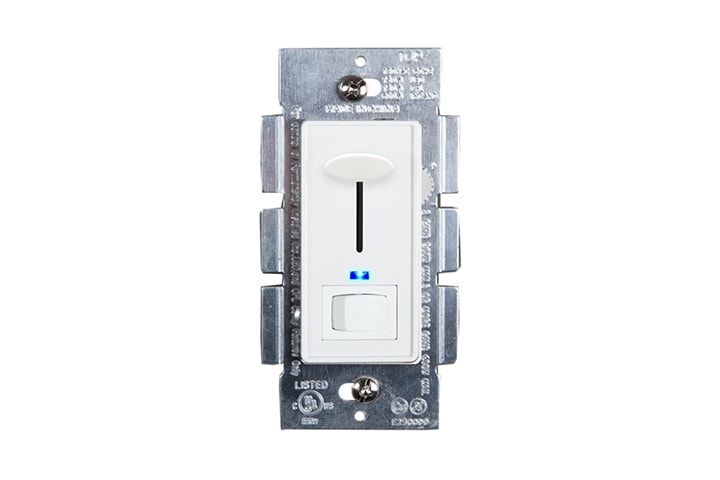
Here are all possible causes for LED flickering with a dimmer:
Dimmable Bulb
First, check whether your LED bulb is dimmable. A common reason why your LED bulbs flash is that you are trying to dim a non-dimmable LED bulb. Unlike incandescent bulbs that create light from heating that can be dimmed by nature, LED bulbs create light in a different way by using a semiconductor that not all LED bulbs are dimmable.
When you try to dim a LED light, make sure it states dimmable on the packaging or product description before purchasing. If you try to dim a non-dimmable led with a dimmer, it may cause glitches such as: buzzing or humming sounds, flickering, strobing or flashing, or light flickers or glows when the light is already turned off, also known as “Ghosting”.
Compatible Dimmer
A dimmable LED may still flash if the dimmer switch is not compatible with LED bulbs. Old dimmers are mostly leading-edge technology types with a high minimal load, designed for incandescent and halogen bulbs. If you use an old dimmer or leading-edge dimmer with a dimmable LED light, the LED may flicker and create a buzzing sound because leading-edge type dimmers are not quite suitable for LEDs. LED lacks enough resistive load for the old dimmer to work correctly.
You need to buy a LED-compatible dimmer switch designed for LEDs and can handle low-wattage LED bulbs. Most of the time, they are trailing-edge dimmers, while some LEDs can perform best when working with a leading-edge dimmer. Because there are so many types of LED bulbs and they vary from each other, it’s hard to tell what type of dimmer switch is working best with them. So it’s best to first check what type of dimmer switch the dimmable LED you bought requires.
The best case scenario is when both the dimmer switch and LED bulbs are compatible with each other. You will often see dimmer switch manufacturers have a recommended compatible bulb list so that customers can choose bulbs from the list to avoid flickering LEDs.
Or you can use a universal dimmer with both leading edge and trailing edge modes available, which can work on all types of bulbs like incandescent, dimmable LED and CFL bulbs. A universal dimmer switch will also usually provide full range and smooth dimming to eliminate the flickering of lights.
Wattage Range
Every dimmer has a wattage rating and they have different ratings for different types of loads. For example, the most common ratings are 600W and 1000W for incandescent or 150W for LED or CFL. If you are loading too many lights on the circuit that exceed the maximum range, your dimmer is overloaded and will cause LED flickering.
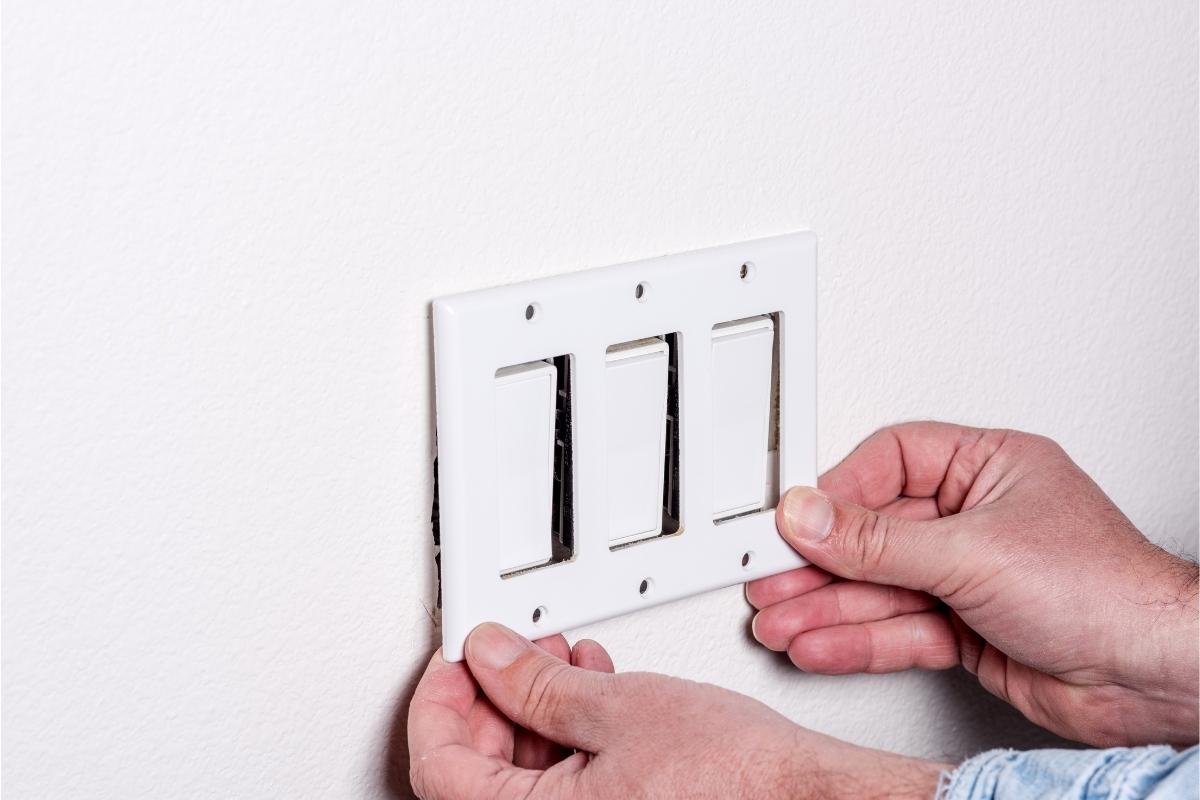
When choosing a dimmer switch, it’s common to de-rate the ratings to about 70~80%, so it’s safe from overloading. Another situation when you need to de-rate the rating is when you use a dimmer switch with multiple switches ganged together because it makes the generated heat difficult to release, which will decrease its rating range.
To solve this, simply remove some of the LEDs on the circuit or install a new dimmer switch with a larger rating that is able to cover the load to avoid flickering.
Minimal Light Level
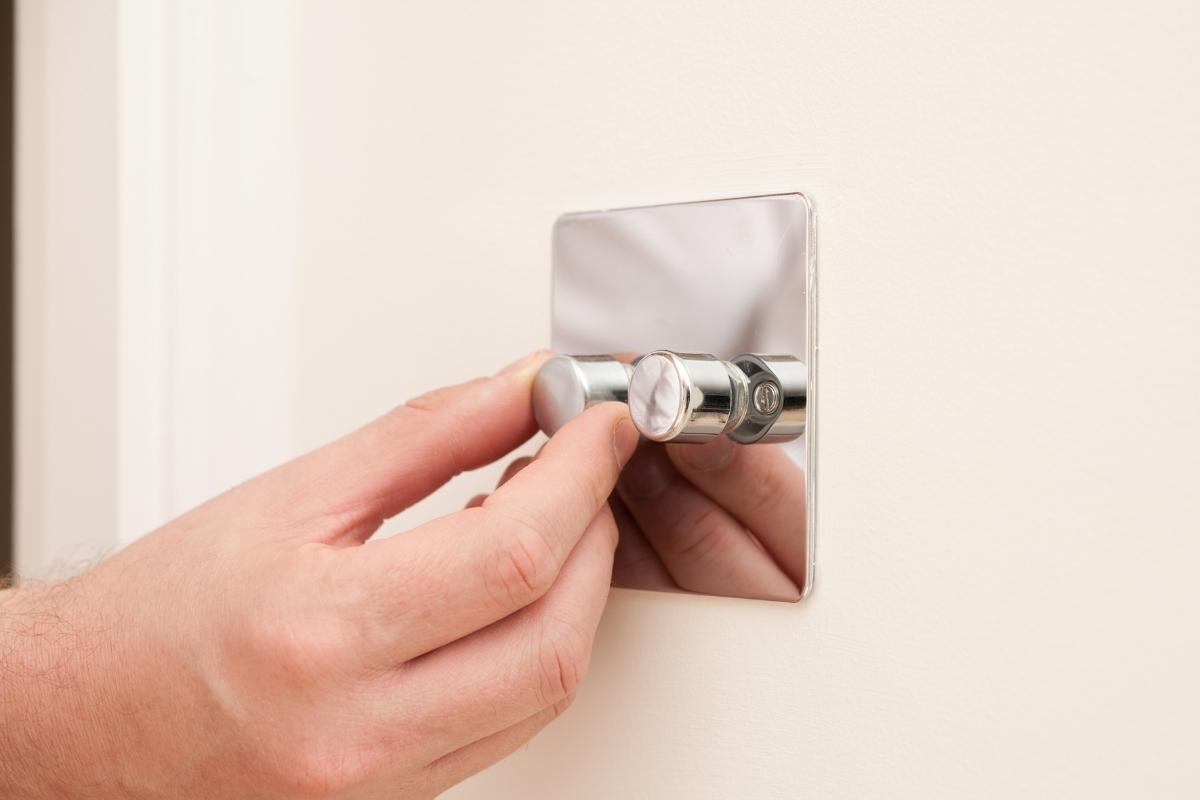
LED flickering happens most frequently when you dim the light at lower light levels, such as dimming down below 50%. Different manufacturers have different load levels for dimmable bulbs. Some LED and CFL bulbs can dim down to 10%. Some can dim down even further and smoother without any flickering or buzzing. In contrast, some LED requires a higher low-end level and cannot dim down that far. So, when you select the dimmer switch at the minimum light level, the LED might flicker if it cannot dim down to that level.
To solve this, you can adjust the low end of the dimming range to reduce flicker. What you need to do is to turn the dimmer switch to the minimal light level and then fine-tune the low-end load till the LED gets stable and won’t flicker. Look for low-end trim or minimal light level adjustment in the user manual of your dimmer switches for detailed instructions.
Use a Dimmer With a Neutral Wire
As already discussed above, using a neutral required dimmer switch can avoid the leakage holding current to prevent the LED from flickering when the switch is turned off. A dimmer switch that uses ground wire for installation will leak a small amount of current to the LED, which may trigger flickering.
Upgrade to a New Bulb or Fixture
Sometimes the only way to resolve a dimmable LED from flashing is to replace the low-quality lamp with a new one. If the LED is cheaply made, nothing can efficiently prevent it from flickering.
How to Troubleshoot and Fix Flickering LED Lights
Although we have addressed the solution to each cause in the above sections, a step-by-step troubleshooting process is still beneficial to help you quickly locate the cause of a flickering dimmable LED light.
- Check the flickering LED bulb. Tighten the existing bulb, test it with new working ones, or test the flickering bulb in other locations in your house.
- Check the flickering LED lamp. Replace it with a new working LED lamp. If it’s due to a faulty LED lamp, you can further check for its capacitor or drivers, as they are the usual suspects.
- Do you use a dimmer? Are the dimmer and LED compatible with each other? Is the LED dimmable?
- Check for the easy loose wirings behind the lamp or the wall switch.
- Does flickering happen when you do specific tasks like turning on a large appliance?
- Do only one or two isolated lights flicker? Do LED flashes only occasionally? Or do the lights in the whole house flicker?
LED Lights Occasionally Flicker
When some of your LED lights only occasionally flicker, it’s hard to troubleshoot because you can hardly locate the apparent causes. If after switching the flickering lights with new working ones or testing the flickering lights in different locations in your house doesn’t solve the issue, the problem mostly lies in the voltage fluctuations, which may be related to a dimmer, transformer, power supply, or many else. Consult an electrician to find the real cause.
Isolated LED Lights Flickering
If there are only some isolated LED light flashes or flickers, you can swap the suspect lamp with working ones or test them in other circuits. It’s easy to rule out the causes after multiple trials and errors.
LED Lights Flickering in the Whole House
When lights are flickering in the whole house, it’s usually due to voltage changes. It can be high load appliances switching on, as we’ve talked about above, or the issue can be completely located outside your house, such as voltage fluctuations coming from the power grid, bad weather or even from your neighbor with the same shared transformer.
Are Flickering LED Lights Dangerous
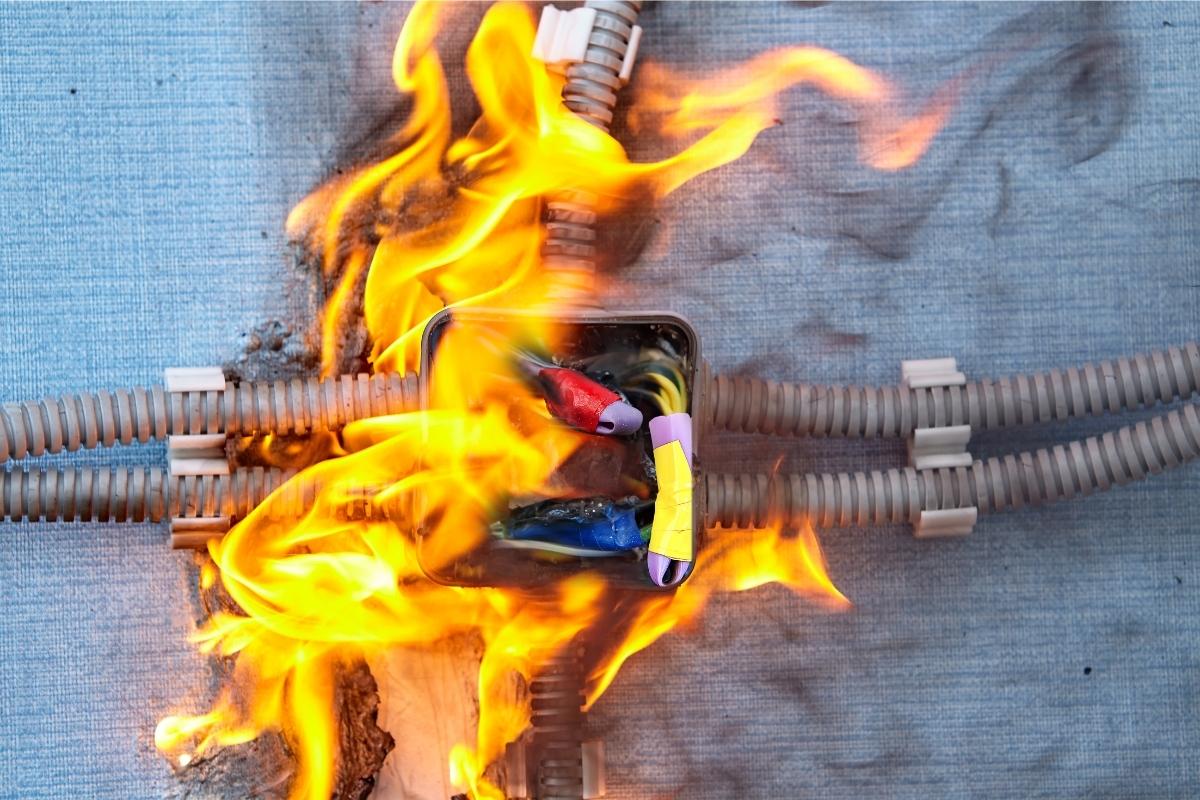
Yes, flickering LED lights can be dangerous. Common flickering causes like loose wiring or circuit overload are leading causes of an electrical fire. Additionally, loose wiring can get worse over time. If you notice the flickering is getting visibly, steadily worse, you should get immediate help from a licensed electrician before it’s too late.
There’s also no need to get overreacted if the flickering is occasional, or it can be simply fixed by replacing new bulbs or lamps.
Do LED Bulbs Flicker Before They Burn Out
Most of the LEDs will go dark or get dim and some LEDs may get intermittent on and off before they burn out. Generally, LED bulbs do not flicker before they burn out, but there are still few LEDs that might appear to flicker, mostly due to overheating.

